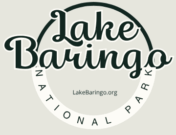📍 Why Lake Baringo Is a Birdwatcher’s Paradise
Located in the northern Rift Valley of Kenya, Lake Baringo is renowned as one of Africa’s best birdwatching destinations, hosting over 470 recorded bird species across freshwater wetlands, bushland, cliffs, and savanna.
Its diverse micro-habitats support an incredible array of raptors, waterbirds, nightjars, hornbills, bee-eaters, and endemic specialties, attracting both casual birders and world-class ornithologists.
🌟 Fun Fact: You can easily spot over 100 bird species in a single day at Lake Baringo with a local guide!
🗺️ Birding Habitats Around Lake Baringo
- The Lakeshore: Waterbirds, waders, herons, and kingfishers
- Cliffs and Escarpments: Raptors, swifts, rock-loving species
- Acacia Woodland: Hornbills, woodpeckers, sunbirds
- Papyrus Reeds & Islands: Cormorants, fish eagles, weavers
- Night walks: Owls and nightjars
With this variety, Lake Baringo offers year-round birding opportunities for beginner and seasoned birders alike.
🦩 Top 10 Must-See Bird Species at Lake Baringo
1. Hemprich’s Hornbill (Tockus hemprichii)
- Habitat: Rocky cliffs and dry woodland
- Highlights: Striking curved red bill, iconic Baringo species
- Fun to Know: This species is hard to spot elsewhere in Kenya, making it a Baringo specialty.
2. Verreaux’s Eagle (Aquila verreauxii)
- Habitat: Cliffs and escarpments
- Highlights: Large black eagle with white V-shaped back marking
- Watch For: Soaring over the Laikipia Escarpment in early morning thermals
3. Northern Masked Weaver (Ploceus taeniopterus)
- Habitat: Lakeside shrubs and reeds
- Highlights: Bright yellow plumage with a striking black face mask
- Watch For: Complex hanging nests, often built communally
4. Goliath Heron (Ardea goliath)
- Habitat: Shallow lake edges
- Highlights: World’s largest heron, majestic and solitary
- Fun to Know: Reaches up to 1.5 meters tall!
5. African Fish Eagle (Haliaeetus vocifer)
- Habitat: Perches near the lake or riverbanks
- Highlights: Iconic call, white head, and powerful talons
- Watch For: Spectacular fish-catching dives from the sky
6. Nubian Woodpecker (Campethera nubica)
- Habitat: Acacia woodland
- Highlights: Speckled plumage and red crown
- Listen For: Rapid drumming on tree trunks or fence posts
7. White-faced Scops Owl (Ptilopsis leucotis)
- Habitat: Tree cavities and dense bushes
- Highlights: Pale face, large eyes, often spotted on night walks
- Tip: Ask your guide about roosting spots near camp
8. Three-banded Courser (Rhinoptilus cinctus)
- Habitat: Dry open ground with sparse grass
- Highlights: Secretive, cryptic plumage
- Best Seen: On early morning or dusk walks in the bush
9. Jackson’s Hornbill (Tockus jacksoni)
- Habitat: Dry shrublands and thorn bush
- Highlights: Smaller hornbill with a red bill, found only in northern Kenya
- Note: Another regional specialty prized by bird listers
10. African Skimmer (Rynchops flavirostris)
- Habitat: Lake shores and shallow water
- Highlights: Unique beak for skimming fish from the water surface
- Best Time to Spot: During low water seasons when sandbanks are exposed
🧭 Best Time for Birding at Lake Baringo
| Season | Birding Highlights |
|---|---|
| Jan–Mar | Peak dry season; good visibility and raptors |
| Apr–May | Breeding season for many residents |
| Jun–Oct | Stable water levels; excellent boat birding |
| Nov–Dec | Arrival of migratory species |
📸 Morning (6:30–9:30 AM) and late afternoon (4–6 PM) are the best times for birdwatching.
👨🏫 Birdwatching Tips for Lake Baringo
- Hire a local bird guide – Many have 20+ years of field knowledge
- Use binoculars – 8×42 or 10×50 are ideal for mixed habitats
- Bring a bird field guide or install birding apps like Merlin or eBird
- Log your sightings – Contribute to citizen science on eBird
- Take a boat ride for the best views of waterbirds and fish eagles
🎒 What to Bring for a Birding Trip
- Binoculars or spotting scope
- Camera with zoom lens
- Notebook or bird checklist
- Light hiking shoes
- Sunhat, sunscreen, insect repellent
- Drinking water and snacks
🦺 Safety & Conservation Notes
- Do not disturb nesting birds or get too close
- Stick to marked trails and avoid flash photography at night
- Support eco-lodges and local birding guides
- Report any injured or trapped birds to local conservation groups
Lake Baringo is under pressure from rising water levels, pollution, and habitat loss. Responsible travel and ethical birding make a difference!
🏆 Where to Stay for Birding
| Lodge/Camp | Birding Perks |
|---|---|
| Robert’s Camp | Budget-friendly, near guides |
| Samatian Island Lodge | Birding from your balcony |
| Island Camp Baringo | Guided walks, boat birding packages |
| Tumbili Cliff Lodge | Views of raptors and cliff species |
Most lodges offer early birding walks and know local guides well.
🔚 Final Thoughts
Lake Baringo is a dream destination for birdwatchers, offering diversity, accessibility, and awe-inspiring birdlife in a unique ecological setting. Whether you’re chasing lifers or just soaking in the sights and sounds of wild Kenya, Baringo’s birds never disappoint.
